-
Membership
Membership
Anyone with an interest in the history of the built environment is welcome to join the Society of Architectural Historians -
Conferences
Conferences
SAH Annual International Conferences bring members together for scholarly exchange and networking -
Publications
Publications
Through print and digital publications, SAH documents the history of the built environment and disseminates scholarship -
Programs
Programs
SAH promotes meaningful engagement with the history of the built environment through its programs -
Jobs & Opportunities
Jobs & Opportunities
SAH provides resources, fellowships, and grants to help further your career and professional life -
Support
Support
We invite you to support the educational mission of SAH by making a gift, becoming a member, or volunteering -
About
About
SAH promotes the study, interpretation, and conservation of the built environment worldwide for the benefit of all
Neo-Andean Architecture in El Alto, Bolivia
Annie Schentag is a 2023 recipient of the H. Allen Brooks Travelling Fellowship. All photographs are by the author, except where otherwise specified.
The streets of El Alto, Bolivia, are a delight of pure chaos—a refreshing sense of confusion that contrasts to many South American cities with their well-ordered streets and colonial squares. As the highest major city in the world (over 13,500 feet above sea level), it presents a series of unique challenges that left me short of breath.
El Alto is essentially the Aymara capital of the Andes. The city is both strongly Indigenous and deeply connected to international economies. During the mid-to-late twentieth century, many Indigenous communities were displaced from the Bolivian countryside due to a series of political, economic, and environmental forces. Aymara populations, in particular, settled in El Alto, which was previously an informal settlement on a high plateau outside of the city of La Paz. In 1987, El Alto was officially incorporated as a city, politically apart from La Paz as its own urban entity. The city proved itself to be a formidable force in the gas conflicts of the early 2000s, demonstrating the political power that an urban Indigenous population could wield during the Evo Morales years.1 About 80 percent of the population is Aymara today, with substantial Quechua and Mestizo populations as well.
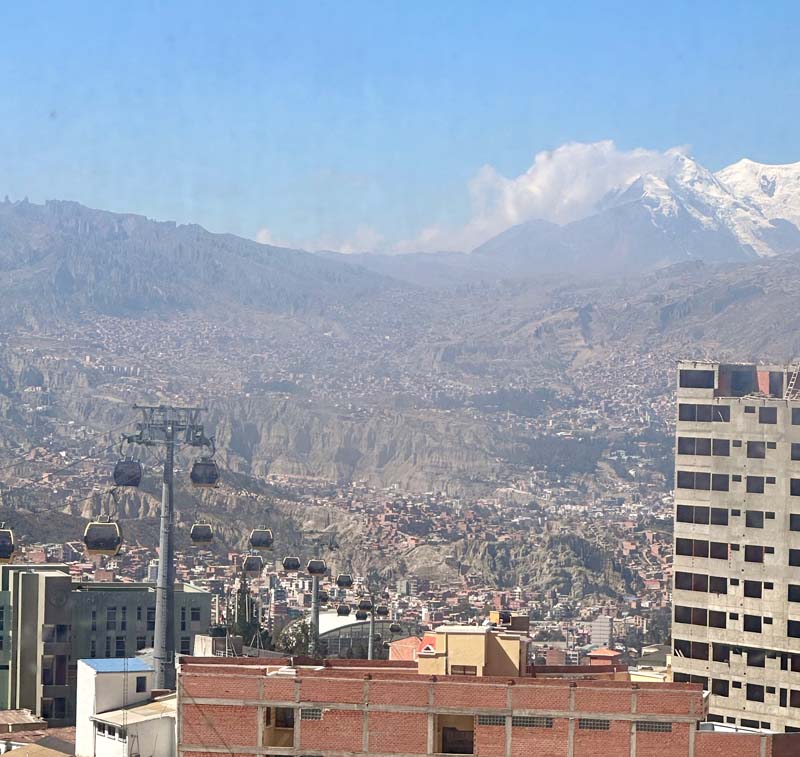
Figure 1. The Mi Teleférico cable car system leading from La Paz to El Alto. These two cities are connected by a multi-line cable car system, the longest and highest in the world.
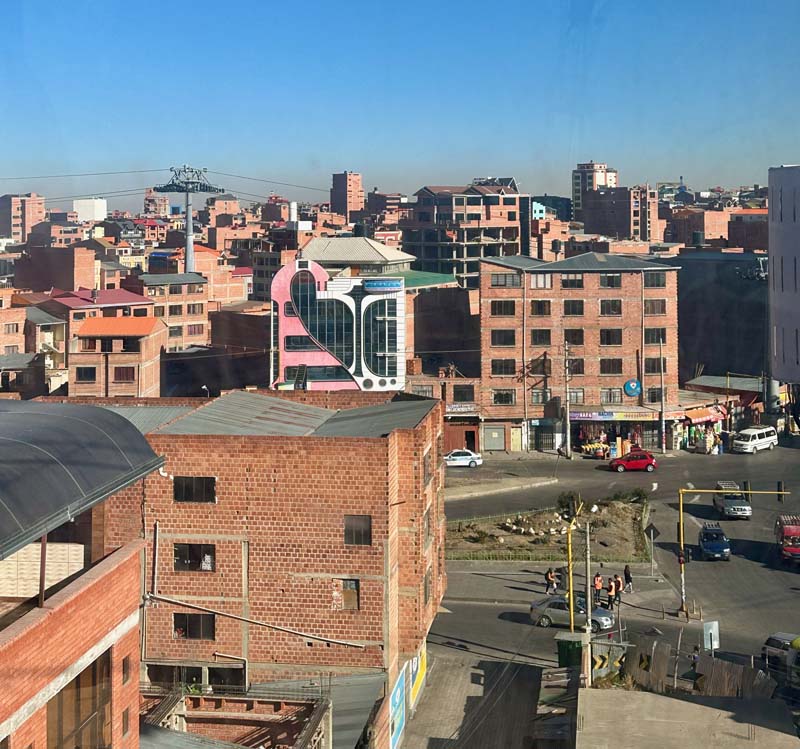
Figure 2. View of El Alto from the teleferico transit system. A cholet stands out amongst a sea of red brick architecture.
The city is a place of high contrasts, evident in the cold air and hot sun that cast sharp shadows in many of my photos. El Alto is growing so rapidly that public infrastructure struggles to keep pace, particularly at the city’s edges where there are many unpaved roads, a lack of consistent electricity, poor access to running water, and insufficient garbage disposal. It has surpassed La Paz in population, but is connected to that city through the highly sophisticated Mi Teleférico cable car system. Below that futuristic vision of silent cable cars, most of the streets are crowded by several undefined lanes of traffic, with trufis (shared minivans) and taxis competing for space with Indigenous street vendors.
You can buy anything in El Alto for a ridiculously low price, if you negotiate in Aymara for goods made in China. This city has one of the largest informal marketplaces in Latin America. While Bolivian officials cultivate relationships with China for larger trade networks and lithium extraction, the Chinese presence is pervasive at the pedestrian level in El Alto. Business owners in El Alto learn Mandarin rather than English to better negotiate with Chinese dealers. One Aymara businessman, who made his fortune in trading Chinese fireworks, built his cholet to reflect the origins of his fortune.
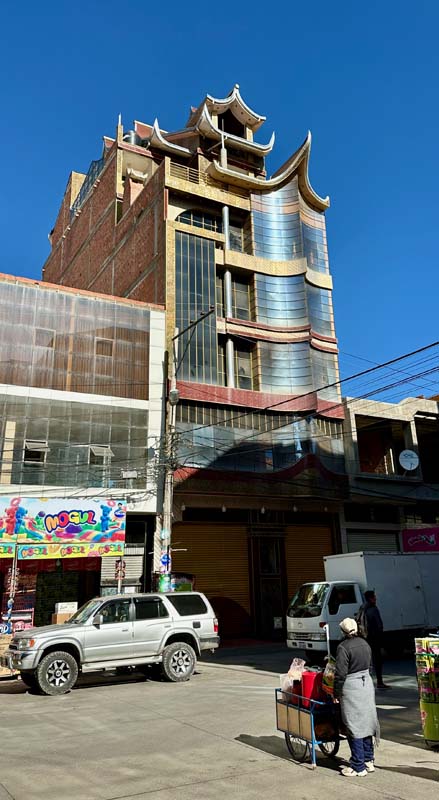
Figure 3. A cholet constructed for an Aymara family who made their fortune selling Chinese fireworks in El Alto.
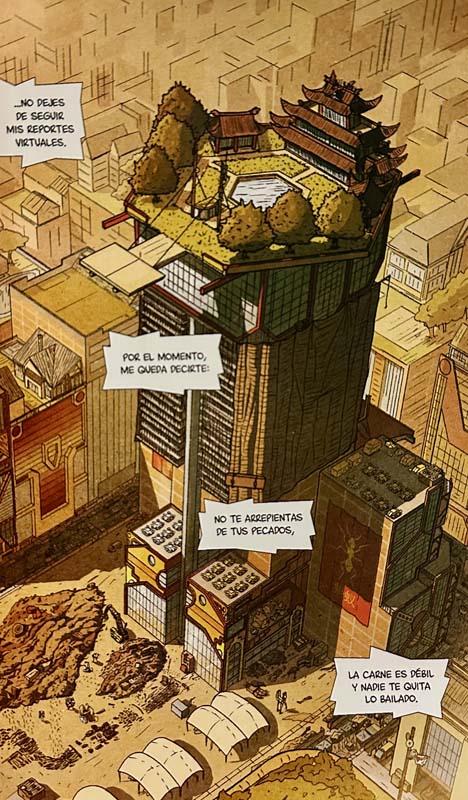
Figure 4. A page from the Bolivian graphic novel "El Altopia," which envisions a futuristic El Alto.2 This page includes an Aymara cholet with a strongly Chinese-influenced design, particularly in the residence at the top of the tower.
El Alto demonstrates that indigeneity can indeed be urban. Contemporary identities can be both rooted in and resistant of colonial traditions in modern Bolivia. The colorful textiles of Aymara cholitas (female Indigenous women, often entrepreneurs) coexist with the capitalist cultivation of profits by selling Chinese imports obtained in a global trade system. These foreign and Indigenous elements manifest simultaneously in the physical environment, in the way that only an urban set of contrasting forces could. As scholar Agnus McNelly has reflected, “Modernity in Latin America contains multiple, overlapping and contradictory temporalities, which coalesce into the appearance of outward-facing, globalized capitalism juxtaposed with traditional indigenous political forms and practices.”3 This is tangible in El Alto at every turn, and nowhere is it more obvious than in the city’s many cholets.
The Cholet: Architecture as Activism
The cholet emerged as an architectural expression of urban indigeneity over the last two decades. Cholets are multi-storied buildings that are most prevalent in El Alto, but there are some examples in other parts of Bolivia as well. Typically, cholets are built by and for an Indigenous economic elite that is both locally rooted and internationally connected. The word "cholet" combines the Bolivian word "cholo" (urbanized Indigenous highlanders) with a loose reference to the glamour of a Swiss alpine chalet. Cholets are characterized by their brightly colored ornamentation inside and out, with a three-part organization visibly evident from the exterior. The elaborate ornamentation typically features many shapes and colors affiliated primarily with Aymara culture, inspired by symbols such as the chakana, or Andean cross, among others.4

Figure 5. Cholets located near a teleferico station in El Alto.

Figure 6. An early example of a cholet by architect Freddy Mamani’s work in the 6 De Marzo district in El Alto (constructed ca. 2001).

Figure 7. Cholets at an intersection in El Alto.
Cholets are easy to spot on the streets of El Alto—they are not subtle. Rather than blend in, they stand out as an expression of renewed pride in Indigenous identity and financial success. For many generations, Indigenous communities in Bolivia experienced extreme prejudice. Many children were not taught the Aymara language by their parents, for instance, as a reflection of this marginalization. Change is occurring in Bolivia, however, which is now officially known as the Plurinational State of Bolivia to recognize and incorporate 36 major Indigenous communities and languages. In La Paz, for instance, Aymara appears as an official language on public transit signs. Encouraging a new generation of urban Aymara, the cholets loudly pronounce the identity of their owners rather than hiding or diluting their culture.
Aymara traditions are part of the conception of a cholet even before the building is constructed. Like many buildings in El Alto and La Paz, to construct a cholet one must first make an offering to Pachamama (akin to Mother Earth) in order to build. This process begins with a trip to the Witches’ Market, where one consults a yatiri (spiritual leader) who assists with the offering. Offering baskets are purchased, typically with a range of sugar candy representations of the type of bounty one hopes the building will bring. Dried baby llama fetuses are typically the centerpiece of these offerings, which I was assured were the result of natural deaths. The llama is a longstanding, multifaceted symbol, as well as a reference to the power of Pachamama to “take care of all.” Because buildings are not part of the earth, these offerings secure a form of safe passage for construction and bond the man-made buildings to the natural power of the earth itself. Placed inside the foundations of the building, these offerings seek, and ideally provide, protection for the construction crew and occupants of the building once it is completed.

Figure 8. A basket of sugar symbols and dried llama fetus, typically offered to Pachamama prior to the construction of a cholet. These offerings are located inside the foundations of many buildings in El Alto and La Paz today.

Figure 9. The witches’ market in La Paz contains many stores like this one, run by Aymara yatiri who specialize in many types of offerings, potions, and traditions.
As a typology, cholets serve a mixed-use function that is rooted in financing their construction.
The ground floor typically holds a commercial storefront, the floors above hold a large event space, and the rooftop level is crowned with a large semi-freestanding residence for the building owner. They are usually designed by an architect as a complete building but are often constructed in multiple stages. Sometimes a building owner is wealthy enough to construct a cholet all at once, but more often they are built in three major stages from the ground up. Once the storefront level has earned enough money to finance the next stage, the upper floor event space is constructed. Finally, the residence is built, now that the lower floors have financed its construction.

Figure 10. A cholet under construction reveals the structural importance of columns and the interplay of brick and concrete.

Figure 11. Two cholets in El Alto. The completed Girasol cholet on the left contrasts with the cholet on the right, in which the upper floors are still under construction. In the latter, note the details in the doorway of the completed storefront, typical of many cholets that are built in multiple stages.
In both its construction and its functions once completed, a cholet attests to the financial prowess of its owner. The storefronts serve as important commercial spaces for local businesses, typically selling imported Chinese goods, bodega style snacks, or Aymara textiles. They are the most publicly accessible spaces of a cholet, so I had the privilege of visiting a few under the guise of purchasing an unnecessary toothbrush or bag of chips. Their elaborately painted ceilings do not disappoint.
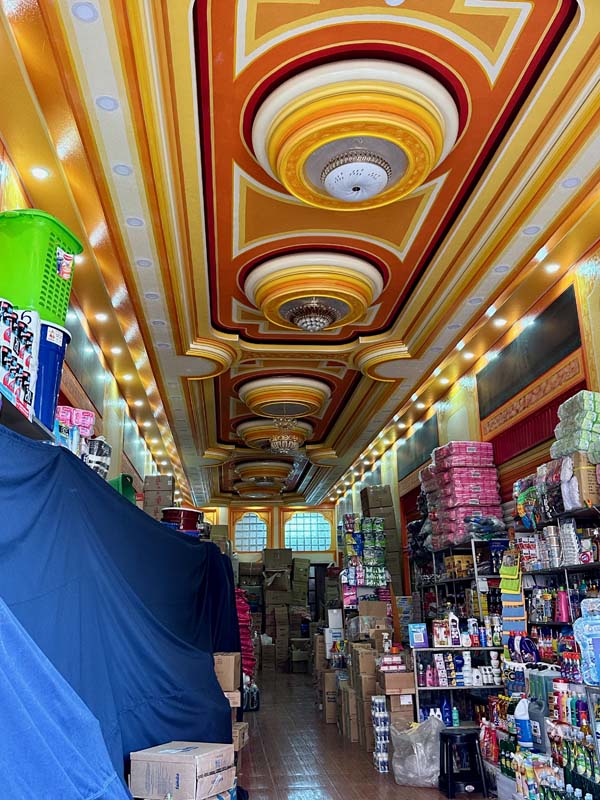
Figure 12. Peeking into the storefront of a cholet designed and constructed by Freddy Mamani, ca. 2001.
The upper floor event spaces are architectural proof that Aymaras know how to party. Serving as the primary financial driver of cholets, these event spaces compete for customers by providing increasingly lavish, bright, intense rooms. Some employ different themes to brand themselves as the primary event destination of the month. Architecturally, they sure know how to commit to a theme. At least two Transformer-themed cholets exist in El Alto, for instance, where subtlety is not on the party agenda. This type of architecture is an experiment in maximalism that some have called "Bolivian Baroque," well-suited to the Aymara tradition of all-night community parties.5
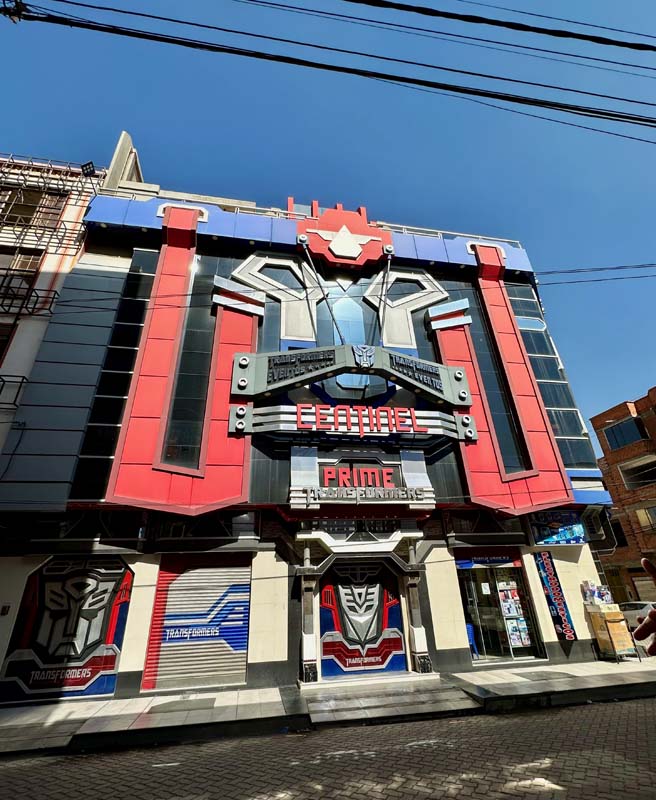
Figure 13. A Transformer-themed cholet designed and constructed by Santos in El Alto.
I was able to access the event space of one particularly prominent cholet in El Alto, the Imperio del Rey building designed by Aymara architect Freddy Mamani Silvestre. Freddy Mamani, as he is widely known, has established his career as the major architect for designing cholets—a typology that he is credited with inventing. At Imperio del Rey, I can see why.
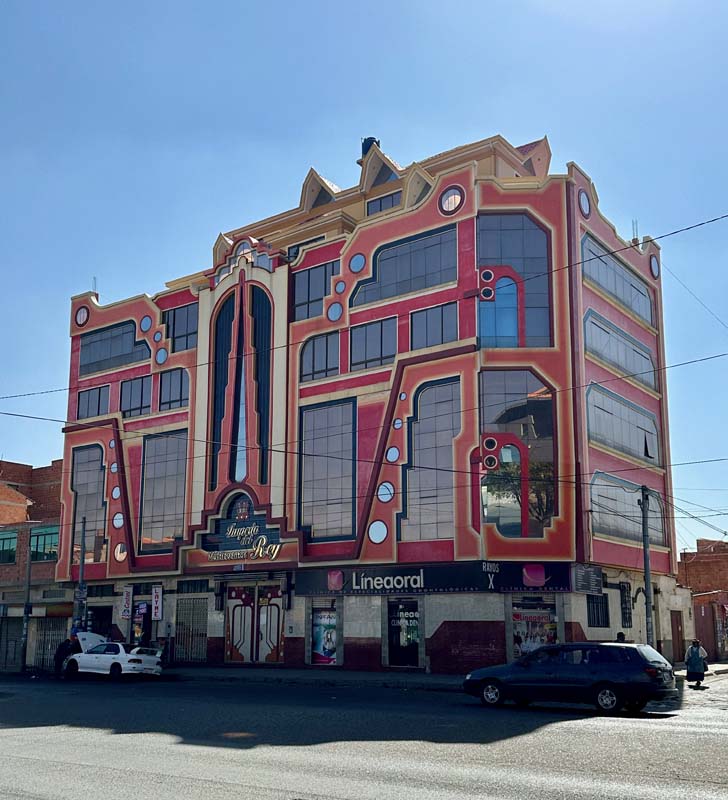
Figure 14. Exterior view of the Imperio del Rey cholet in El Alto, designed and constructed by architect Freddy Mamani.
A complex series of stepped ornamentation creates layered references to Aymara culture, painted in bright, symbolic colors inside and out. Using a set of oculi, for instance, he simultaneously references the flamingos of Oruro (where the building owners are from) on the exterior and the five eyes of the Aymara sun god, Inti, inside. Plaster-clad steel columns support a large open space for dancing and drinking, painted and adorned with bright, even psychedelic patterns and forms. Drains in the floor are a great example of an element specifically designed to suit the spaces’ function in this cultural context: every time Aymara partygoers cheers one another, a little bit of alcohol must be poured onto the floor for Pachamama.

Figure 15. Inside the main event space on the upper floors of the Imperio del Rey cholet. Note the drain on the floor is specifically designed to accommodate Aymara party traditions.

Figure 16. Detail of windows inside the Imperio del Rey cholet. This series of shapes references the face of Inti, the Aymara sun god.

Figure 17. View of ballroom space, bar, and balcony inside the Imperio del Rey cholet.
When Aymara communities moved to El Alto, they faced the challenge of adapting their customs to a different living environment. The city lacked the regular sun exposure prevalent in the countryside, which regulated not only time but also spiritual, commercial, and physical rhythms. The residences atop cholets reflect this dedication to the sun, which maximize sun exposure in their orientation, setback, large windows, and other details intended to trap heat and provide plenty of light. Pointed rooftops, pagoda-inspired gables, and numerous ornamental details distinguish the residences and their design inspiration from chalets. Architectural symbols of European financial success are merged with global capital endeavors, Indigenous spiritual references, and colonial practices into a proud Aymara display—a truly El Alto blend.

Figure 18. Detail of residence at top of the Imperio del Rey cholet in El Alto, with Mamani’s characteristic pagoda-inspired roofline.
Drawing Conclusions
There is so much I did not know about cholets, and so much more that I still do not know. But I do know that I want to see cholets appear in more classrooms, more articles, more conversations in American institutions. To do that, I had to learn about them differently, to somehow see a cholet with different eyes.
For some crazy reason, I tried drawing a cholet—while on a shaky bus, winding through the Andes, no less. To be more precise, I only drew a portion of a cholet, for the sake of my own sanity. I don’t quite know why I started my own journey into drawing with a cholet, of all buildings. I blame the high altitude, it goes straight to the head.
I am an architectural historian, not an architect. I draw conclusions, not buildings. I can barely draw a straight line. My students are architects and designers, but I do not design. This has been one of the biggest struggles of my teaching career thus far. I encourage them to draw, yet I do not do it well, nor often. There has been a cognitive dissonance in that.
So, with the time and distance this fellowship has granted me, I tried drawing as an exercise to see differently, not simply see different places. I tried my hand at drawing a cholet, not to create but to see, rather than merely look.

Figure 19. The author’s attempt at freehand drawing, July 2023.
The result was a humbling, yet educational, disaster. Until now, I had not quite internalized Alain de Botton’s reflection that, “Drawing brutally shows our blindness to the true appearance of things.”6 The very act of drawing can transform a building from an overall impression to a series of interconnected forms, materials, challenges, and values. After drawing a cholet, for instance, I finally saw that windows are not merely windows: they are interlocking systems of impossibly straight lines that could also serve as free spaces between complex patterns. These cholets were far more intricate than my brain would admit.
It was a deeply imperfect exercise, but that became the point. It was not about the product, but the process. It was an entirely uphill battle of detail, of not quite straight lines in asymmetrical arrangements. But my sad attempt at drawing a cholet still had massive gains for me. The level of ornamental detail on a cholet became even more impressive once I tried to draw one, poorly. I will share cholets with my students this fall semester, but I expect this post will be the only time I share my drawing. I will leave them and their much straighter lines to their own conclusions.
Like international travel, drawing reminded me just how much there always is to learn. Exploring the unknown requires an approach of determined vulnerability. Drawing helped me become a student again.
1 Shafik Meghji, “Bolivia’s Soaring City,” Geographical (May 2022), 42–49.
2 Alejandro Barrientos and Joaquin Cuevas, El Altopia (La Paz, Bolivia: Editorial El Cuervo, 2022), 8.
3 Angus Mcnelly, “Baroque Modernity in Latin America: Situating Indigeneity, Urban Indigeneity and the Popular Economy,” Bulletin of Latin American Research 41.1 (2022): 6–22.
4 Franck Poupeau, “Indigenous Cosmogony and Andean Architecture in El Alto, Bolivia,” International Journal of Urban and Regional Research (2020), 164–175.
5 Eric Allen, “Architect Freddy Mamani has Transformed El Alto, Bolivia, Into a Mecca of Modern Architecture,” Architectural Digest (July 25, 2018).
6 Alain de Botton, The Art of Travel (New York: Random House, 2002), 195.



Leave a commentOrder by
Newest on top Oldest on top